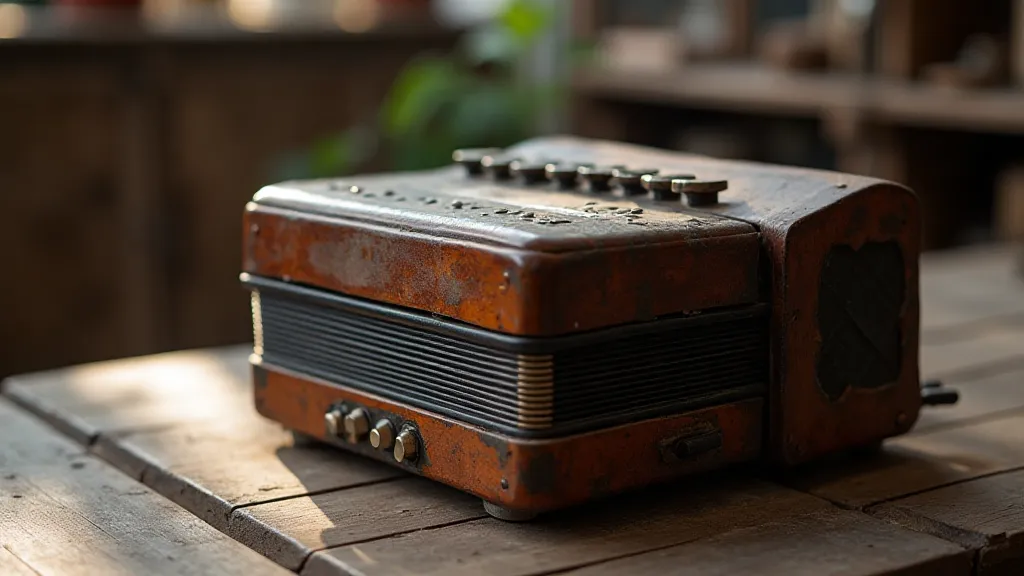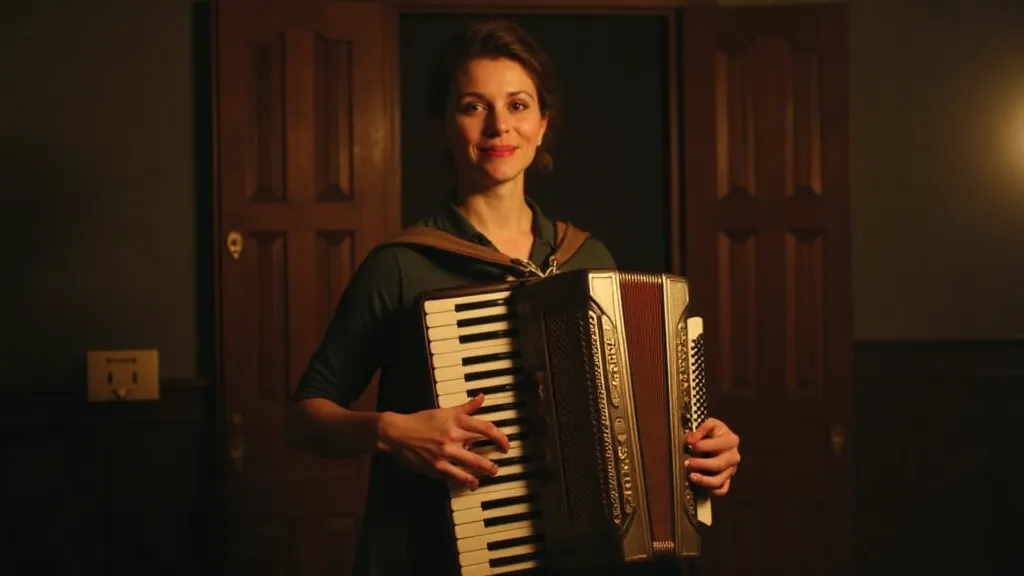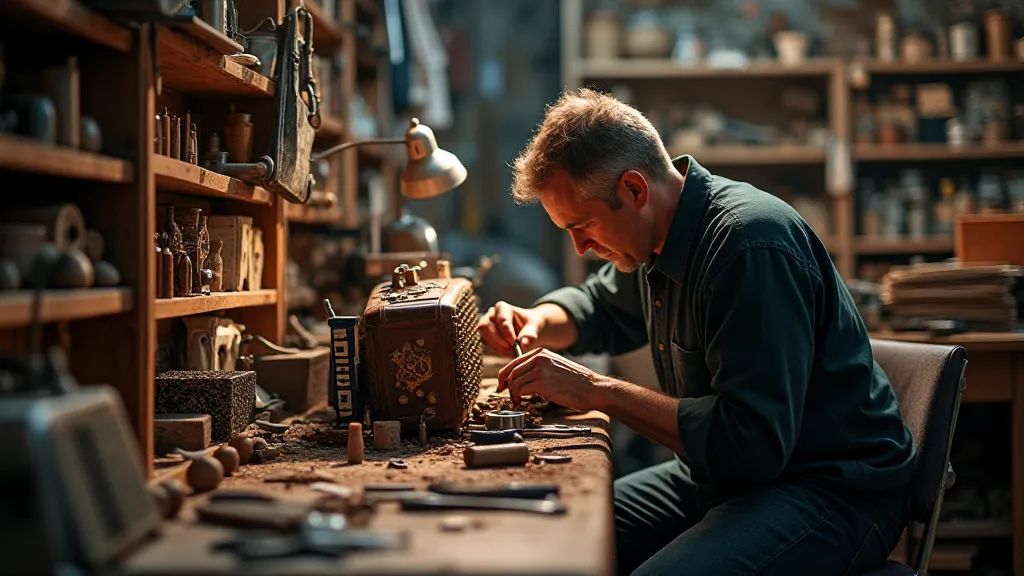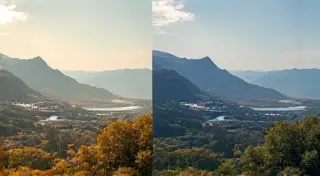The Lens as a River: Guiding Perception Through Depth and Perspective
Photography, at its heart, is an act of storytelling. We, as photographers, are not merely documenting a scene, but shaping an experience for the viewer. While technical proficiency – aperture, shutter speed, ISO – is crucial, true mastery lies in understanding how to direct the gaze, evoke emotion, and craft a narrative through perspective. Think of the lens not as a simple window, but as a river, gently (or dramatically) guiding the viewer’s journey through the visual landscape.
My own fascination with perspective began unexpectedly, not through landscapes or portraits, but through antique accordions. My grandfather, a silent, stoic man, collected them. Not gleaming, pristine instruments, mind you, but the forgotten, the broken, the ones that whispered stories of dances long past. Each accordion bore the marks of time – chipped veneer, faded bellows, keys that stubbornly refused to sing. Yet, within their imperfections lay a profound beauty, a tangible connection to generations of musicians and revelers.

Beyond the Rule of Thirds: A Deeper Look at Composition
We’re often taught the “rule of thirds,” and it’s a valuable starting point. But true composition goes far beyond that. It’s about understanding how the placement of elements within the frame impacts the viewer’s emotional response. Think about converging lines – roads, fences, railway tracks – leading the eye into the distance. They create a sense of journey, of momentum. If the lines converge sharply, they can generate excitement and anticipation. Conversely, a gentle, gradual convergence can foster a feeling of calm and serenity. Consider a photograph of a winding country lane; the road itself becomes a visual narrative, drawing the viewer into a world beyond the frame.
The concept of foreground, middle ground, and background is equally powerful. A well-placed foreground element – a wildflower, a weathered stone – can add depth and scale to a scene. It establishes a sense of perspective, drawing the viewer into the image. When photographing my grandfather’s accordions, I often used a pile of old sheet music or a pile of worn leather straps in the foreground, immediately establishing the instrument's place within a history of music making.
Depth of Field: Sculpting Focus and Emotion
Depth of field isn’t just about blurring the background; it’s a tool for emotional manipulation. A shallow depth of field – a blurred background and a sharply focused subject – isolates the subject, drawing attention to it and creating a sense of intimacy. Imagine a portrait where the eyes are in sharp focus, while the background fades into a soft blur. The viewer’s focus is entirely on the person, creating a connection that transcends the visual. Conversely, a large depth of field – everything in sharp focus – conveys a sense of vastness, of detail, of completeness. A photograph of an accordion repair shop, everything visible from the tools to the piles of parts, conveys the complexity and dedication required to keep these instruments alive.
The technical aspect is simple: wider apertures (smaller f-numbers like f/2.8) create shallow depth of field; narrower apertures (larger f-numbers like f/16) create large depth of field. But the *art* lies in consciously choosing the appropriate aperture to evoke the desired emotional response. It's a subtle power, but profoundly impactful.
Implied Movement and Visual Flow
Perspective isn’t only about static elements; it’s also about creating a sense of movement. This can be achieved through several techniques. Motion blur, achieved by using slower shutter speeds, can convey a sense of speed or fluidity. Leading lines, as mentioned earlier, naturally guide the eye and create a visual flow. The position of the photographer – whether standing high above a scene or crouching low to the ground – drastically alters the perspective and, consequently, the emotional impact.
Think about a photograph of a musician playing an accordion. Capturing the blurred motion of their hands as they play creates a feeling of energy and passion. The accordion itself, a physical embodiment of that movement, becomes a symbol of joyous expression.

The Philosophical Dimension: More Than Meets the Eye
Perspective, at its core, is a philosophical consideration. It’s about recognizing that there is no single, objective truth. Every photograph is a subjective interpretation of reality, shaped by the photographer's choices. Understanding this empowers you not only to take better pictures but also to appreciate the artistry of others.
My grandfather rarely spoke about his accordion collection, but I understood, through their silent presence, that each instrument represented a memory, a connection to a lost world. Capturing their essence through the lens wasn't simply about documenting their physical appearance; it was about preserving their stories, their echoes of joy and sorrow. It was about reminding myself, and hopefully the viewer, that beauty exists not only in perfection, but also in the imperfections that mark the passage of time.
Restoration, Collecting, and the Appreciation of Craftsmanship
The allure of antique accordions extends beyond the visual. The craftsmanship – the meticulous construction of the reeds, the intricate carving of the bellows, the careful tuning of the keys – speaks to a level of artistry rarely seen today. Restoring these instruments is a labor of love, a way of connecting with the generations of artisans who poured their skills and passion into their creation. Collecting them isn't about acquiring possessions; it’s about preserving a piece of cultural heritage.
Careful handling and preservation are crucial. Humidity and temperature fluctuations are the enemy. Regular cleaning with appropriate tools is essential. For those considering restoration, seeking advice from experienced accordion repair professionals is highly recommended. The goal isn’s simply to make the instrument look new, but to maintain its integrity and functionality, respecting its history and character.

Ultimately, mastering perspective in photography – beyond the technical settings – is about cultivating a deeper understanding of the world around you and learning to communicate that understanding through the language of light and shadow. It’s about recognizing that the lens is not merely a tool for recording reality but a powerful instrument for shaping it.





